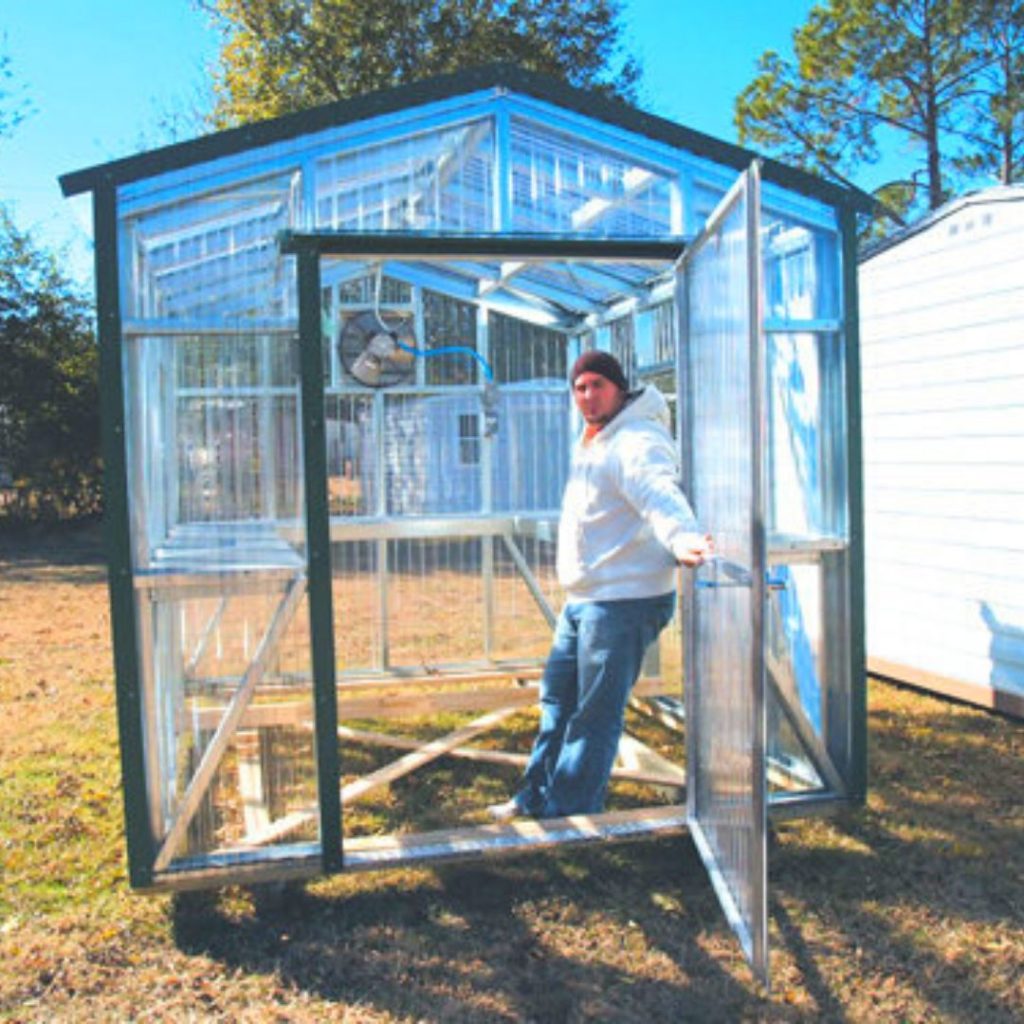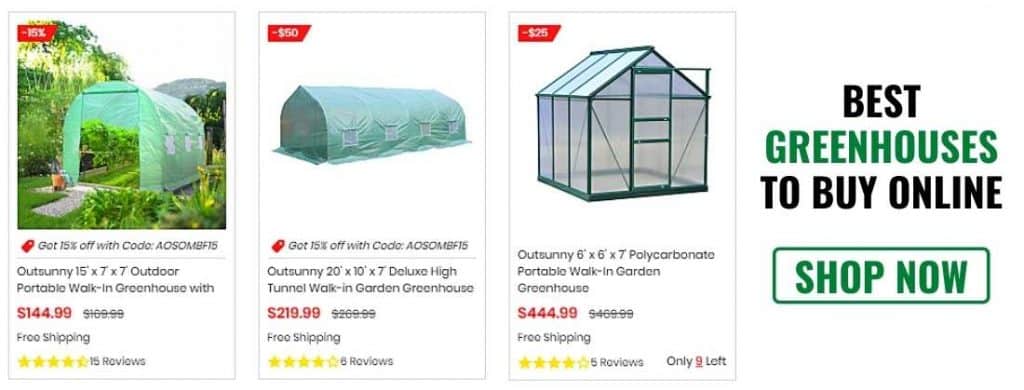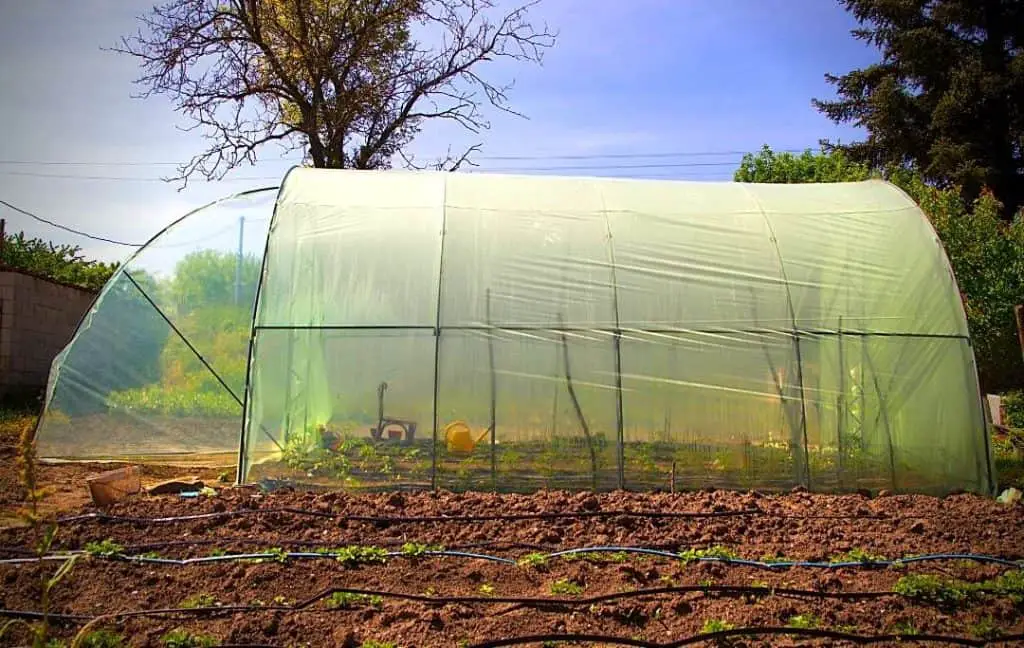If you are thinking about growing vegetables and quite don’t know how to start then let me help you. Do you know that you could use a small greenhouse to grow vegetables? Greenhouses serve as a shield between nature and what you are growing. They thus allow growing seasons to be extended as well as possibly improved.
They are used to protect plants from pests and cold or heat. It is used around the world in every country. There are also different types of greenhouses. It has become quite an apparent choice in the 21st century.
Always select a better place that receives a good amount of sunlight to build your small greenhouse. You can build a cheap greenhouse by using PVC pipes and plastic sheets or you can spend a few bucks and build a strong and long-lasting greenhouse by using corrugated plastic, a cooling fan, a heater, and a thermostat to control the inside environment of your small greenhouse.
Benefits Of A Small Greenhouse

1: Longer growing seasons. As stated above, in greenhouses you can extend the growing season considerably. Due to the internal conditions being different from the outside, you can simulate conditions according to your need. You can plan vegetables all year long.
2: Garden in any weather. You can actually grow vegetables that are suited to certain seasons in greenhouses. That is how you get vegetables all year round. You can also protect your vegetables in bad weather like thunderstorms and rains.
3: Protection from pests and predators. Greenhouses can provide you protection from pests and predators. Predators like squirrels or foxes can run over your vegetables. The greenhouses can protect you from pests which harm vegetables.
4: Pesticide-free. You can save yourself and the environment from dangerous pesticides. You don’t have to use them inside the greenhouse. Pesticides run off the soil and harm marine and human life.

Building A Small Greenhouse

The first thing you need to figure out how much space you need for a greenhouse. You should evaluate how much you want to grow because a greenhouse is a long term option. Often people make greenhouses but end up finding space too short in a years time.
1: Choosing the size, site selection, and requirements.
Choose a place where you want to place the greenhouse. Make sure it is a plain and level ground as an abrupt land is not able to accommodate vegetables. The closer the greenhouse is to your house, the more likely you are to use it. The more likely you are to maintain it. You want to look for a place where there is access to sunshine. On average 6 hours of sunlight per day will work.
You want to orient the greenhouse from east to west to get maximum sunlight. You should make sure the site has adequate drainage for the vegetables. Water holdup can damage vegetables. Deciduous trees should be planted near the greenhouse, they can provide shade in the summer. In the winters their leaves fall off which means that vegetables can get the sunlight they need.
To create an ideal surface, lay down a layer of landscape cloth over the area to be used this will keep the weeds out, but allow for drainage and cover the cloth with 3 inches of 1/4-inch gravel.
Make sure you have some ventilation points in the greenhouse. It can get really hot in the summer and you want to make sure that there is a place for the heat to escape. When selecting a spot, make sure that you have easy access to electricity and water in the location. Check your vegetables or their seeds before bringing them inside the greenhouse to make sure they don’t have any pests.
2: Choosing the style, frame, and cloth.
There are various styles and frames of greenhouses. You must determine which one you want to use. There are ones which you can find within your budget. Although there are many styles and structures, for a small greenhouse you should probably opt for an Eastpoint or Northpoint. Both of these are perfect for small structures and can be really budget-friendly.
Next, you want to pick the cloth to place in the greenhouse. A cloth is used to limit the amount of sunlight the greenhouse receives. There are various options for these clothes. For a small greenhouse, the knitted shade cloth is perfect. It is made of lightweight polythene and is quite easy to install.
They are also ultraviolet resistant and quite durable. You will notice these clothes by their distinctive green color. For vegetables use a cloth that has at least 50% shade. So that they can get an adequate amount of sunlight that they need.
3: Installing the door.
Once you have covered the greenhouse with the cloth the next step is to choose the doors. You need to choose doors which are good enough and will last. If you are looking for something convenient and have a budget, then might I suggest sliding doors. A lot of people use them in greenhouses. They are really easy to use and make work easier as well.
If you are looking for something else then you can also install a simple glass door or a steel door. It is important to make sure that your doors make your greenhouse well insulated so that heat cannot escape the greenhouse.
4: A proper ventilation system.
Ventilation units are really important in the summers. Overheating can really destroy your vegetables. For a small greenhouse, you can choose a ventilation fan of a small size as well. Since we are talking about a small area, one fan should do the trick. However, make sure that the one fan is installed in a place where it is accessible to the whole greenhouse.
The size of the fan can be increased if you want to plant more vegetables. This is something that can vary because everyone will have unique choices. If people are growing vegetables that tend to give off more heat then you are best suited to a big fan which can pull everything out.
It also depends on the area you live in. If it really gets hot in the summers then, by all means, you need a ventilation unit, no doubt about that.
Ventilation units should be installed because the good growth of vegetables is dependent on optimum conditions. A galvanised angle wall fan is a great recommendation for a small greenhouse. It can be easily installed on any wall of the greenhouse.
5: An adequate heating system.
Just like cooling, your vegetables will also need heating in various conditions. We talked about in the start that greenhouses can provide you with vegetables all year round. This is due to the fact that they can replicate conditions of a perfect growing season. When it gets really old in the winter then this heating system is really vital.
There are many options for heating. Including propane, natural gas heaters, oil heaters, convection tubing and hot water heaters. Depending on the place you live in and the availability, pick something that isn’t too big. The Remington heater is my recommended choice. It is something that is within the budget of anyone and it has zero compromises on performance.
People often use it for larger greenhouses which means that it will perform all the better in a small one. If you want to go with something different then you can also choose the Delta Tube SD. These are a different type and will provide vegetable heat from below. Like before, it really depends on the area you live in. Colder regions will definitely require proper heaters.
6: Environmental controls and benching.
We have talked about heating and cooling above. You will need an environmental control system to control these functions. For small greenhouses, you can actually start by using thermostats. Thermostats are great options, mainly because of their functionality. They are cost-effective and everyone can use them.
Greenhouse control systems can help take offloads from you. They can work on automated tasks, which means you don’t have to check in again and again. Similarly, you want to choose a good benching system. One which is strong enough to hold those vegetables and also provide space for all of them. You can honestly choose any benching structure because mostly the growing conditions matter more.
7: Caring for your greenhouse.
Once you have completed the above 5 steps, you are good to grow vegetables in your greenhouse! You probably want to make sure you routinely check on some things in your greenhouse.
- Make sure that your vegetables are getting enough drainage, sometimes one can forget about it.
- Make sure that the ventilation fan is working fine and isn’t clean. Sometimes dirt can get locked up in the wings.
- Similarly, make sure your heating unit is functioning properly.
- You also want to regularly check for pests and diseases in your vegetables.
- Routinely check your greenhouse for tears and damages, sometimes bad weather can cause that.
If you don’t want to go through all these steps for some reason. Here are few ready-made small greenhouses you can order right now.

Watch 100 Cheap & Easy DIY Greenhouse Ideas in this video.
Read More
- Easiest Vegetables To Grow In A Mini Or Small Greenhouse
- How To Grow Beefsteak Tomatoes Indoor?
- How To Grow Purple Potatoes In Containers
Sharing is caring.

